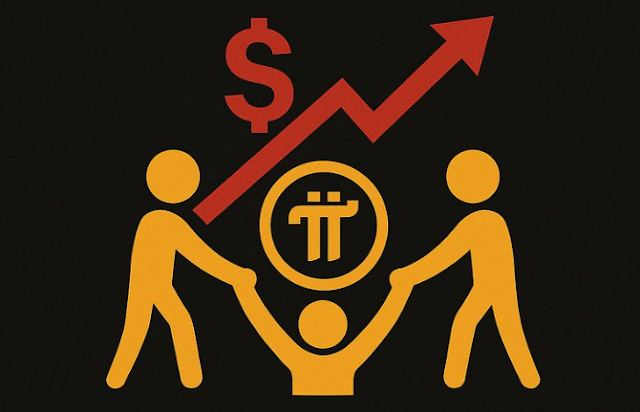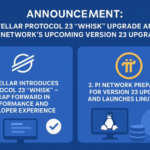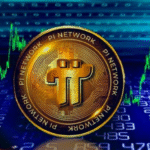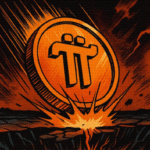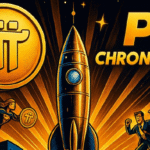GATEOFWISE.COM
In a world long defined by centralized control and corporate dominance, decentralized technologies are carving out a new path challenging entrenched power systems and reshaping economic participation. Pi Network, a blockchain project rooted in community and contribution, is increasingly seen as an alternative to exploitative models maintained by governments and multinational corporations. This analysis explores the idea of a Pi Network “reset scenario,” examining its philosophical underpinnings, its contrast with coercive governance, and its potential to ignite a quiet yet transformative revolution.
Historical Patterns of Exploitation
For decades, centralized powers have maintained dominance through debt-based economies, monopolistic regulations, and unequal access to resources. These mechanisms protect elite interests at the expense of broader populations. From national debts to corporate lobbying and financial exclusion, structural imbalances have fueled discontent and calls for reform.
Key features of systemic exploitation include:
- Concentration of wealth and decision-making power
- Dependence on fiat systems and inflationary policies
- Lack of transparency in governance and finance
- Active suppression of alternative models
This backdrop sets the stage for decentralized movements like Pi Network to gain traction.
Coercive Governance as a Case Study
The Trump administration highlighted a style of governance that many described as coercive yet justified under the guise of national interest. Economic leverage, transactional diplomacy, and strong centralized control were normalized as strategies of sovereignty.
This reveals a broader paradox:
- Coercion framed as protection
- Economic tools used to enforce compliance
- Limited space for dissenting voices
- Centralization defended as security
Against this context, Pi Network offers a starkly different vision based not on force, but on voluntary participation and shared value.
Pi Network’s Quiet Revolution
Rather than confrontation, Pi Network advances a model of systemic reset through contribution based economics. Participation, verified identity, and real-world utility form the backbone of its design. Unlike traditional systems rewarding capital accumulation, Pi values time, authenticity, and engagement.
Core aspects of Pi’s reset model include:
- Mobile-based mining supported by KYC verification
- Ecosystem growth via decentralized apps
- DAO governance and proposal voting
- Merchant adoption tied to Global Consensus Value (GCV)
This framework reimagines economic empowerment as collective, inclusive, and non-competitive.
Redefining Value Through Contribution
In the Pi model, contribution is the true measure of value. Users generate Pi by engaging with the network, validating identity, and fueling ecosystem development. This challenges the conventional assumption that value must stem from speculation or institutional approval.
Benefits of contribution-based value:
- Fair and transparent distribution
- Access regardless of financial background
- Consensus-driven pricing stability
- Immunity from extreme speculative swings
By reshaping the definition of value, Pi advocates for a fairer, more sustainable digital economy.
Anticipating Resistance from Elites
As decentralized systems grow, resistance from entrenched institutions is inevitable. Governments and corporations may attempt to suppress or absorb blockchain innovations to protect their control.
Likely tactics include:
- Tight regulatory scrutiny
- Disinformation against decentralized platforms
- Delays in exchange access and liquidity
- Attempts to centralize governance within Web3 projects
Yet, Pi’s resilience lies in its community. Millions of pioneers globally are building, educating, and promoting an economy where contribution outweighs control.
Predictive Outlook: What Lies Ahead
Though the future cannot be fully predicted, several developments are likely as Pi Network matures:
- Ecosystem activation with GCV-based commerce
- Expansion of merchant integration and usability
- Alignment with national and regional payment systems
- Active DAO governance participation
- Strategic partnerships for infrastructure and scalability
Such steps could make Pi a credible alternative to traditional finance, particularly in regions underserved by banks.
Ethical Considerations and Global Impact
The Pi reset raises important ethical questions:
- Can contribution-based systems realistically replace debt-driven economies?
- How will decentralized governance ensure fairness and accountability?
- What balance should governments strike between support and regulation?
- How can users remain safe from new forms of exploitation in Web3?
Answering these questions will determine Pi’s long-term legitimacy and influence.
Conclusion
The Pi Network reset scenario envisions economic renewal in a world weighed down by exploitation and centralization. Through quiet reform anchored in contribution-based value, decentralized governance, and shared purpose Pi challenges the status quo and points toward a fairer digital economy.
Elite resistance is unavoidable, but Pi’s power lies in its community and its philosophy of participation over dominance. In time, this collective commitment may reshape not only digital economies but also the broader structures of global finance.
